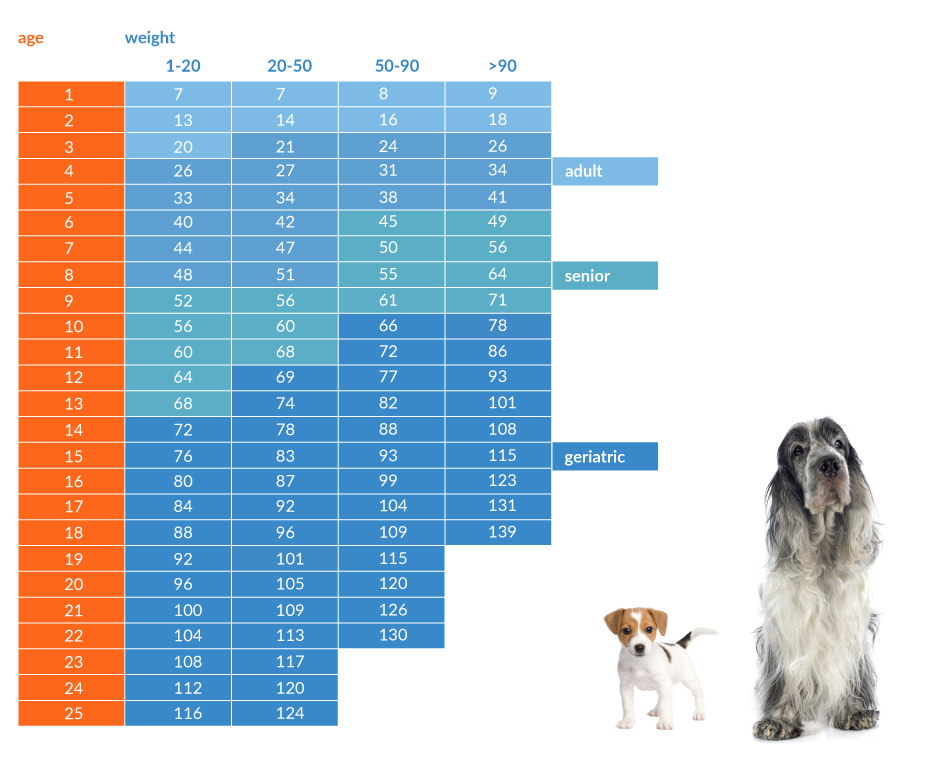
How Old Your Pet Is In Human Years
The general rule of thumb for calculating a pet’s age in “human years” has always been to simply multiply by 7. Unfortunately, this approach doesn’t quite paint the full picture of how pets age.
Actually, a dog’s aging process is accelerated during the first few years of life and then slows down after that. After one year, a dog is actually considered to be 15 in human years. Additionally, the specific breed of dog plays a factor in lifespan. Smaller dogs tend to live longer than medium-size dogs, who in turn live longer than large dogs.
“Although smaller dogs tend to live longer than larger dogs, they may mature more quickly in the first few years of life,” says the Lawrence Vet Hospital in Lawrence, Kan. “A large dog may mature more slowly at first but already be considered elderly at age 5. Small and toy breeds don’t become ‘seniors’ until around age 10. Medium-sized breeds are somewhere in the middle in terms of maturation and lifespan.”
This Pet Health Network chart offers a handy guide.

What about our feline friends? Like dogs, cats mature more quickly during the first couple of years and reach adulthood relatively soon, but then age at a slower rate as time goes on.
The International Cat Care group provides an excellent feline version of an age chart.
On average, Siamese and Manx breeds are said to live the longest, according to Purina.
Some rare felines live past the age of 30, which is pushing 150 in human years.
Life stage | Age of the cat | Equivalent human age |
Kitten | 0-1 months | 0-1 years |
0-6 months | 2 months | 2 years |
| 3 months | 4 years |
| 4 months | 6 years |
| 5 months | 8 years |
| 6 months | 10 years |
Junior | 7 months | 12 years |
7 months – 2 years | 12 months | 15 years |
| 18 months | 21 years |
| 2 years | 24 years |
Adult | 3 years | 28 years |
3 – 6 years | 4 years | 32 years |
| 5 years | 36 years |
| 6 years | 40 years |
Mature | 7 years | 44 years |
7 – 10 years | 8 years | 48 years |
| 9 years | 52 years |
| 10 years | 56 years |
Senior | 11 years | 60 years |
11 – 14 years | 12 years | 64 years |
| 13 years | 68 years |
| 14 years | 72 years |
Super Senior | 15 years | 76 years |
15 years + | 16 years | 80 years |
| 17 years | 84 years |
| 18 years | 88 years |
| 19 years | 92 years |
| 20 years | 96 years |
| 21 years | 100 years |
| 22 years | 104 years |
| 23 years | 108 years |
| 24 years | 112 years |
| 25 years | 116 years |